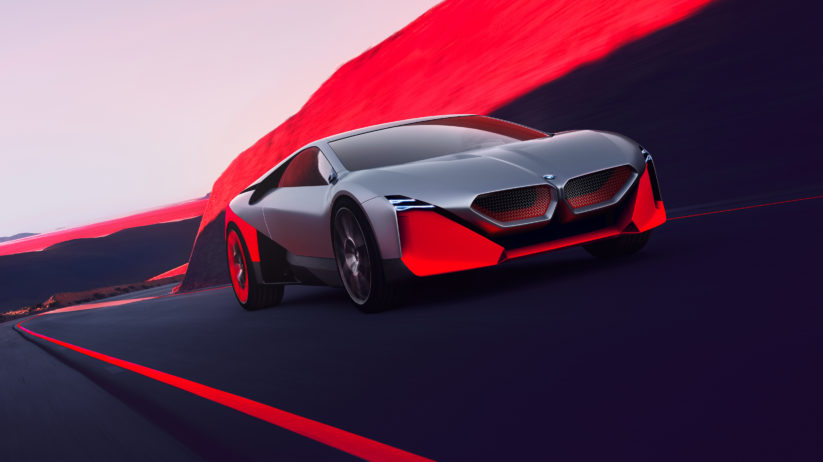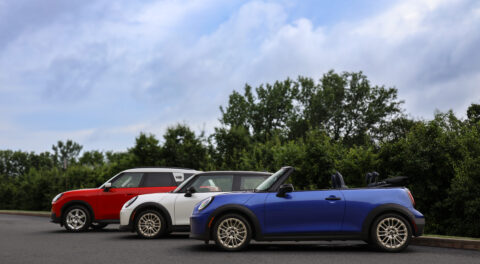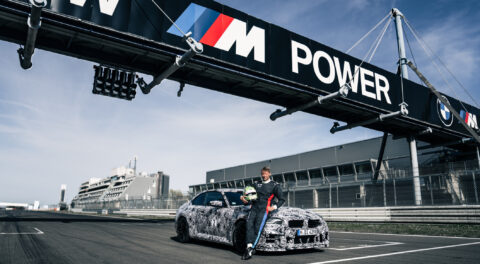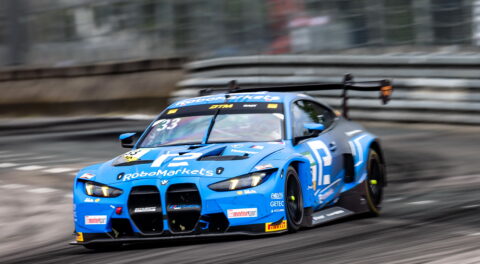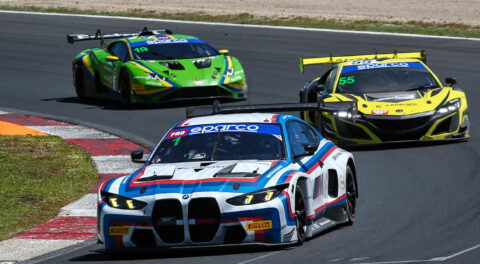There’s no reason the future has to be the dark, grey, dystopian vision that Hollywood has instilled in our collective psyche. It doesn’t have to be a miserable place where the driver is relegated to letting autonomous systems do all of the work, either. At least, that’s what BMW’s Vision M Next concept car proclaims, unveiled during the company’s NextGen conference in Munich.
Combining the collective presence of an i8 with distinctive M1-derived characteristics, the Vision M Next melds innovative and lightweight recycled materials, along with a potent, mid-mounted four-cylinder engine and powerful electric eDrive motors for each axle. It’s also got an interior with memory foam seats that take the unique shape of the occupants, a three-pane instrument display for the person behind the rectangular steering wheel, and the road ahead is illuminated by laser wire lights which use fiber glass strands coated in phosphorus. The motive force of the hybrid setup totals 600 horsepower, enough to propel the two-seat, mid-engine performer from zero to 60 mph in three seconds, while exclusively electric range is 62 miles.
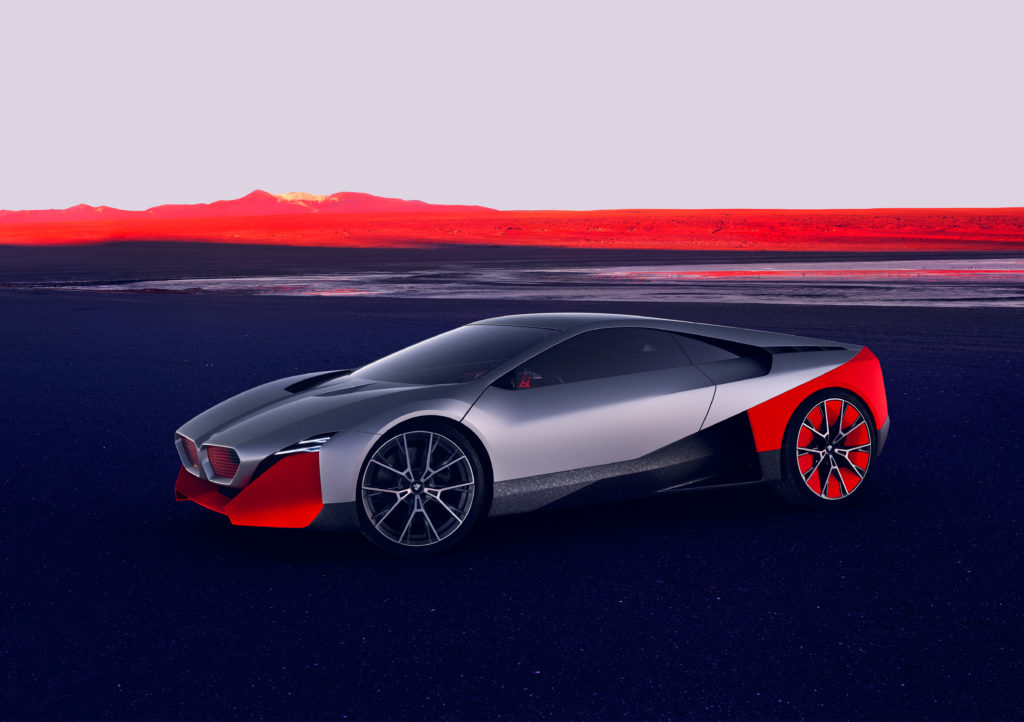
Vision M Next is cutting edge in that it will come with BMW’s latest autonomous drive technologies, while also maintaining a clear connection to the past. In addition to a clear resemblance to the current i8—which will need replacement at some point before long—Vision M Next was also clearly influenced by the M1. Separate panes of glass that follow a louvered design extend from the roof to the rear end, where a pair of roundels make an appearance, one at the upper corner of each tail light. Looking for a Hoffmeister Kink? instead of the rear window and frame taking the shape, it’s been integrated into the body itself.
Side skirts that angle upward as they extend aft are made from recycled carbon-fiber, while the rear wheels, which measure 22 inches in diameter (one more than the front set) use a 3D multi-spoke design with aerodynamic inserts. The drag reducing inserts are finished in the same contrasting orange color as fractional portions of the rear end, perhaps the only debatable design characteristic of the concept. Doors that open in the style of a Gullwing are flashy in their own right, and although there’s no chrome anywhere on the exterior, the kidney grilles are actually blocked off with an illuminated laser-etched roundel-style pattern that has the effect of floating within the openings.
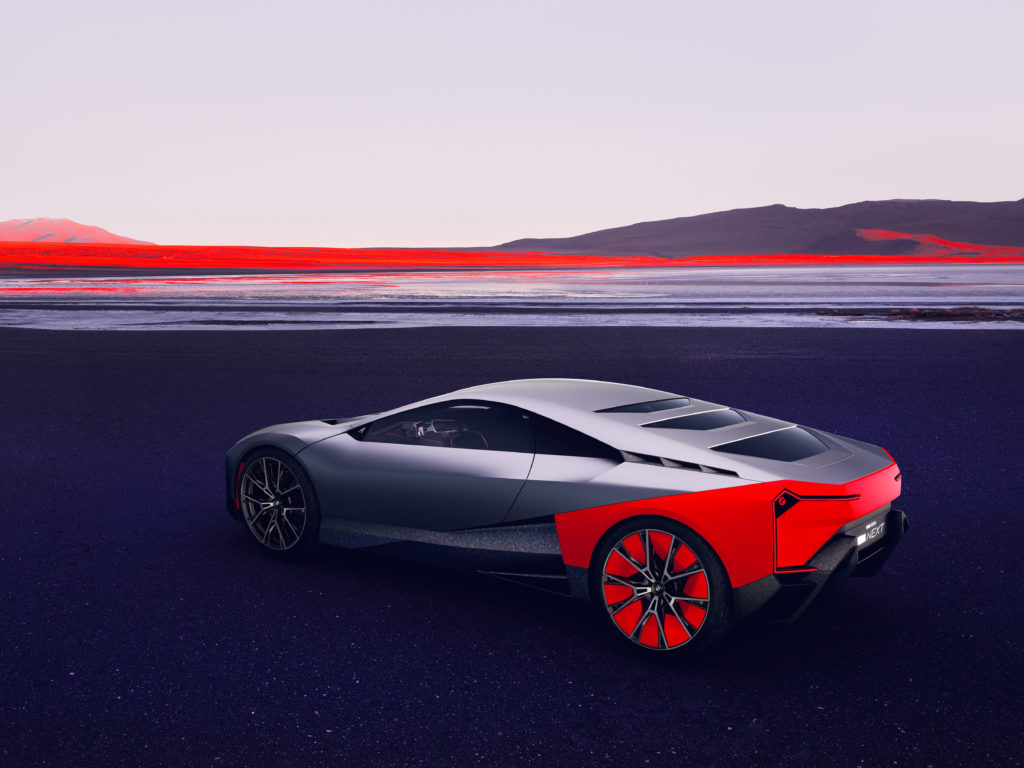
The interior is a realm of its own, with materials almost seem almost otherworldly. Purely driver-focused in its orientation and layout, coming into contact with a touch sensor is the first step of gaining egress. The gullwing door swings open and upward, allowing access to the flowing seats which are made of a material with memory properties. The sculpted design of the upholstery, which is said to conform to the varied human form with optimal support, is continued on the door panels, dash, and elsewhere. There’s a distinct tactile experience to everything as well, with materials like microfiber fabric, synthetic woven fibers, and anodized titanium making up the interior and exterior.
Looking forward, the fully immersive driving experience of tomorrow begins with placing your hands on a steering wheel that looks more like an enlarged version of a gaming console controller. Again, everything is angled toward the one in control, and gazing at the road ahead, all relevant information is presented within the driver’s field of view. More specifically, there are three distinct visual tiers directly forward of the operators seat; the first is formed by the steering wheel and uses two small displays. Next, in the driver’s line of sight, is a curved glass display, which uses the same technology that should appear in other forthcoming BMW models, like iNEXT. The third plane is actually the windshield, which is used as a staging area for a full-surface augmented reality heads-up display.
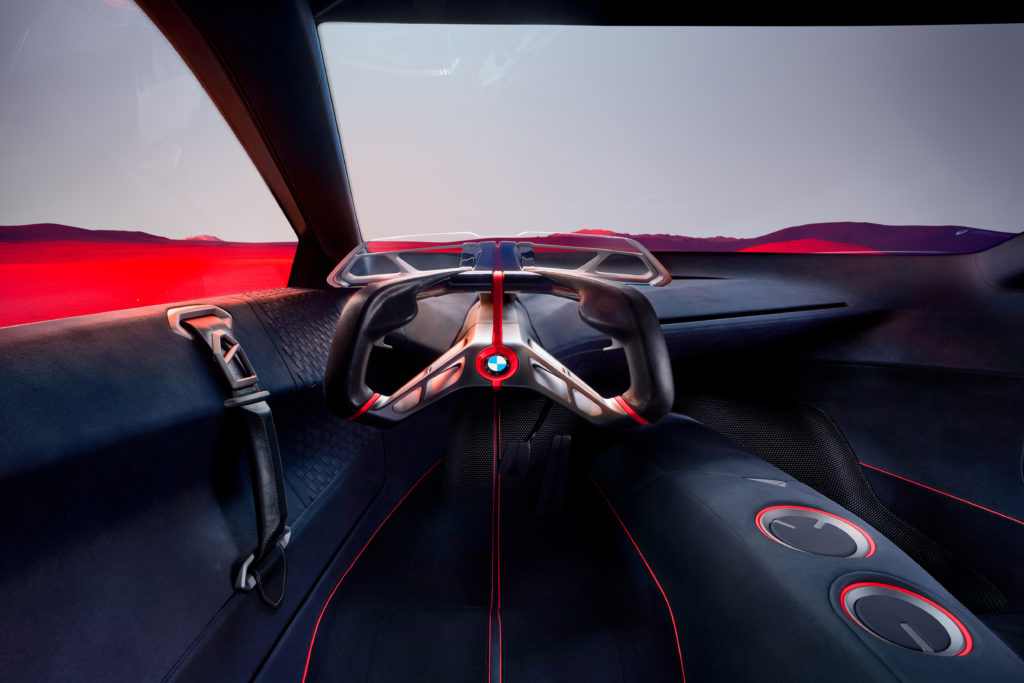
BMW M was recently reported to have been looking into unique models not based on those of standard series production. Could Vision M Next be one of these future models? With 600 horsepower coming from a heavily boosted four-cylinder and twin eDrive units, one at each end, we sure hope so. It’s merely a concept at this time, but Vision M Next would be an excellent follow up to the groundbreaking i8, which helped to change public perception and usher in a range of other performance hybrids. If you’re worried about some of the visual and design eccentricities never making to a final, fully developed version, one doesn’t need to look much further than the Vision EfficientDynamics concept of 2008—the precursor to the i8—to see how committed BMW is bringing conceptual styling to the production line.—Alex Tock
[Photos courtesy BMW AG.]

